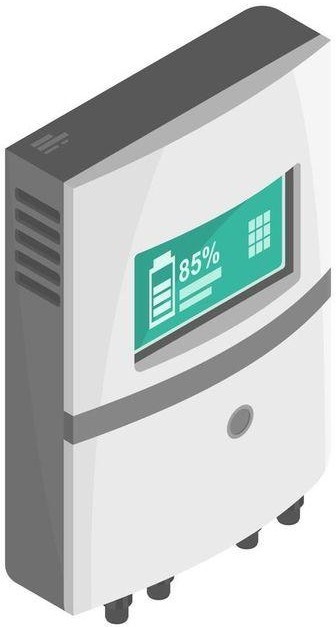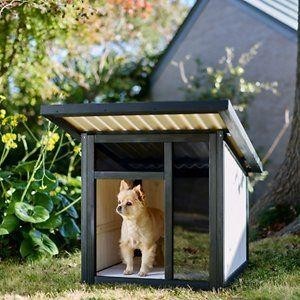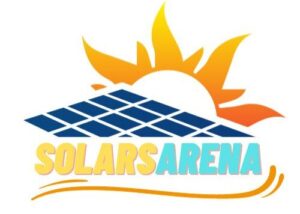It’s yet another cold winter morning. You get up from your slumber and head out to take a look at your backyard shed where your feathered friends are nestled within from the biting cold.
As you near the shed, you brace yourself for the cold that greets you as you open the door. But this time it’s different. Today you’ve made a change to your shed.
You open the door but you met with a warm breeze. The cozy heat from solar-powered lamps has turned your shed into a safe haven for your animals.
As a homeowner, if you are thinking of investing in solar powered heat lamps and eventually buying one, You need to first understand how they function to make things smoother for you.
How does Solar Heat Work?
The working principle behind the solar heat is capturing the sun’s energy and converting it into a home or business system resource.
It consists of two components
– Solar panel- Roof installations. They have photovoltaic cells that turn sunlight energy into electricity.
As long as there is sufficient sunlight in your area, the PV cells can absorb it.
– Inverter – just as the name suggests, an inverter converts DC from the solar panels to
Most appliances run using the AC power, in this case, it powers the heat lamp.

How can a solar powered heater be used for a shed?
A Solar Powered Heater for a shed means an outdoor building with a dedicated solar powered system. It is used to keep the shed comfortable and warm in extremely cold seasons like winter.
What are solar heat lamps?
Heat lamps’ main function is to provide space heating and warmth to a room . But can you use solar panels to heat lamps?
Yes, of course. In fact, solar panels come with plenty benefits.
Unlike other heat lamps that utilize only electricity, solar heat lamps utilize the sun’s energy. It converts sunlight into electricity then heat energy making it an eco friendly option for you.
Heat lamps powered by solar panels are cost efficient and easy to install compared to their counterparts. “In a recent study it is suggested that your heating bills will eventually drop from 50% -80% once you opt for solar , saving you dollars.” (Source)
Additionally, since the sun if a free resource , you’re secured from future price hikes due to fuel shortage.
What are they used for?
Solar heat lamps are used to keep a home, shed or animal pets and livestock kept at home warm. It includes but not limited to chickens and other feathered birds, cold blooded reptiles, dogs and goats .
During cold winter seasons it may be hard for them to adjust. A solar powered heater heater may come in handy during such harsh times.
How can a solar powered Heater be used for a shed?
As stated earlier a shed is an outdoor house or room that runs a solar powered system, but how can a solar heater be used for a shed? The heater provides space heating to the room containing appliances or your animals.
There are many various types of sheds. The one you own will depend on the type of solar powered heater you would install. There are many types of sheds out there but the most common are the
- office shed
- Workshop shed for DIY projects
- Garden shed to keep farm animals, garden tools or plants
A shed that runs under a heater which utilizes solar, is an eco-friendly option that only consists of two features. Solar panels , inverter and heating elements.
What are solar heat lamps for chicken coops?
In times of cold winter seasons, chickens and other feathered animals can freeze to death and their waterers too. As a chicken owner, you should invest in both the solar heater for chicken water and a solar heater for chicken coops to keep both the chickens comfortable and water from freezing.
“It is advisable to use a heater solar for poultry water instead of the electric option to prevent fire outbreaks.” (source) Solar heater is plugged directly into chicken water – no wiring needed or a huge power cord that runs from the mains supply to the barn.
Solar powered heat lamps for animals
– Solar powered heat lamp for dog house
Dogs usually don’t need artificial heat because of their fur that acts as an insulator. However, “the US Department of Agriculture USDA suggests that you should not expose your furred pets to a temperature of under 45 degrees Fahrenheit for more than 4 hours.” (source) It’s therefore crucial to use a solar heater for your pets at home.
You can choose to go green and use a solar heated dog house to keep your dog warm. Just like a plug and play system, the solar heater for pets is inexpensive and consists of a small setup – solar panels, inverter and heater.

– Solar Powered water heater for goats
Just like other animals, you need to keep goats hydrated at all times. When frost and cold weather arrive in an unheated building it’s important for the water to remain frost-free.
Whether the goats are in the field grazing or indoors.
If you have a goat house, install the solar panels on the roof and consider purchasing the electric antifreeze water bowl. According to pubmed , “goats prefer drinking warm water”.
Can we use heat lamps for indoor and outdoor plants?
If you are a plant enthusiast you may be asking yourself , do heat lamps work for plants? When cold weather starts to kick in, buying heat lamps for your plants is a game changer for your plant growth especially when starting seeds from scratch.
Do heat lamps work for plants?
Yes, but not all. It isn’t necessary to use heat lamps for the outdoor lamps because they will gain from the dormancy period during the cold.
Battery powered heating lamp vs DIY heating lamp
Battery powered and DIY heating lamps depend on your preferences and specific needs. Heat Lamps powered by battery can be cost efficient but at the same time expensive compared to DIY. Here are some of the comparisons between the two.
| Battery Powered Heating Lamp | DIY Heating Lamp |
| Battery powered typically more convenient as they come ready made with a power source (battery) heating lamps. | DIY heating lamps offers more flexibility for customization. You can select the components, such as the bulb, battery pack and switch, to meet your specific needs. |
| They are highly portable and can be used in various locations without the need for electrical outlets. | DIY heating lamps can be more cost effective if you already have some of the necessary components on hand and are willing to assemble them yourself. |
| Battery powered heating lamps may be more expensive upfront due to their built in power source. | DIY heating lamps require assembly and may involve some technical knowledge and skills. This may not be suitable for everyone. |
Can a solar panel run a heat lamp
solar powered heat lampsYes, a solar panel can power a heat lamp after at least 4 hours of sunlight. A solar heat lamp will last you 5-6 hours. If you’re wondering how many solar panels can power your heat lamp, you can use the formula to calculate,
heat lamp wattage = solar panel wattage plus at least 10%.
Do solar lamps need direct sunlight?
Solar lamps don’t always need direct sunlight to work. They function perfectly in direct sunlight but can also work in cloudy weather and shade. Yes, the clouds block the sun’s energy from reaching the solar panels, this in turn decreases performance but not fully.
Panels contain the solar cells which make contact with sunlight regardless of amount. They then flow throughout the circuit. The movement creates electric charges
Can Solar lamps provide vitamin D?
“Light therapy lamps that imitate the sun’s UV light can help your body create vitamin D.” (source) The lamps are mostly used to treat a depression disease called Seasonal Affiliate Disorder (SAD). However, too much exposure to the lamps can cause skin cancer just as the sun would.
Note: If we have missed some helpful info or points, kindly let us know in the comments section below. Your efforts will be appreciated

